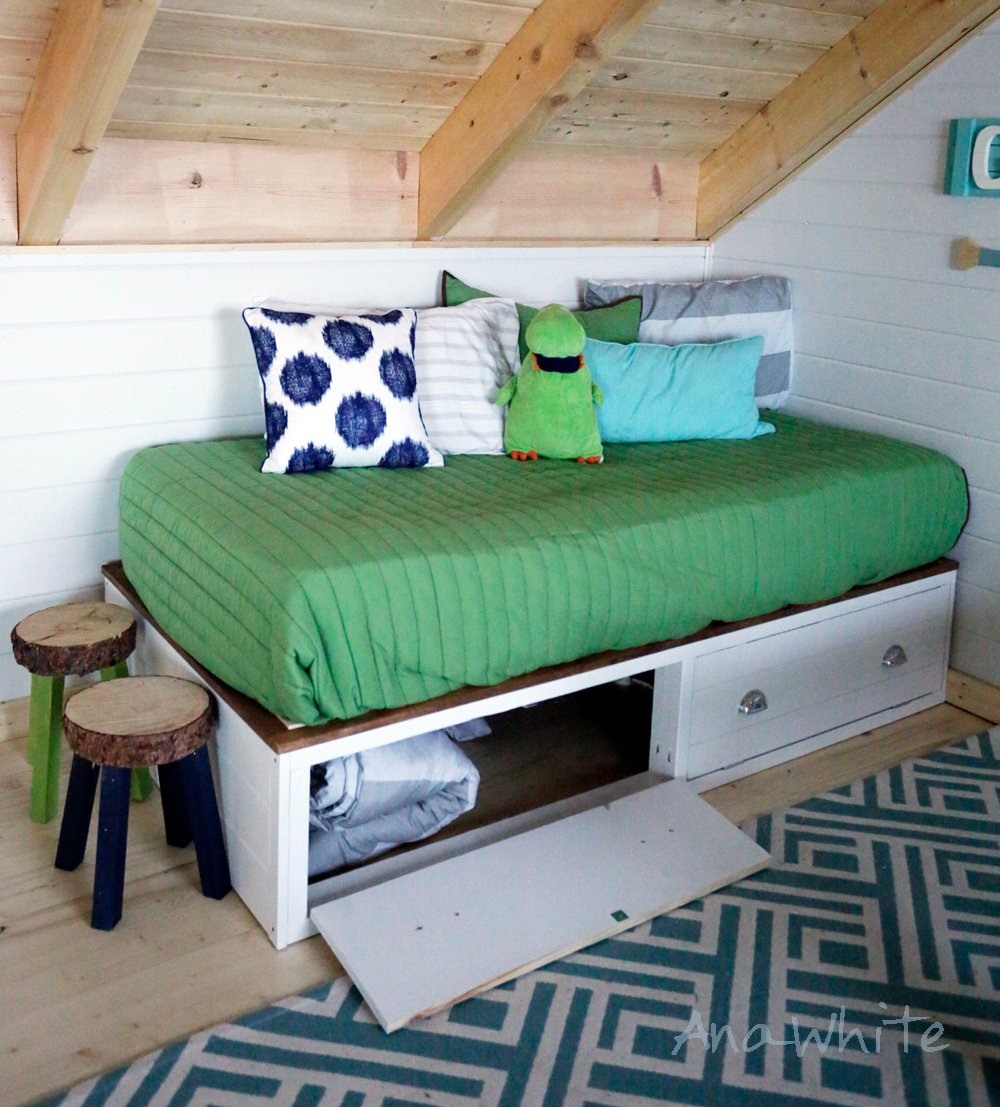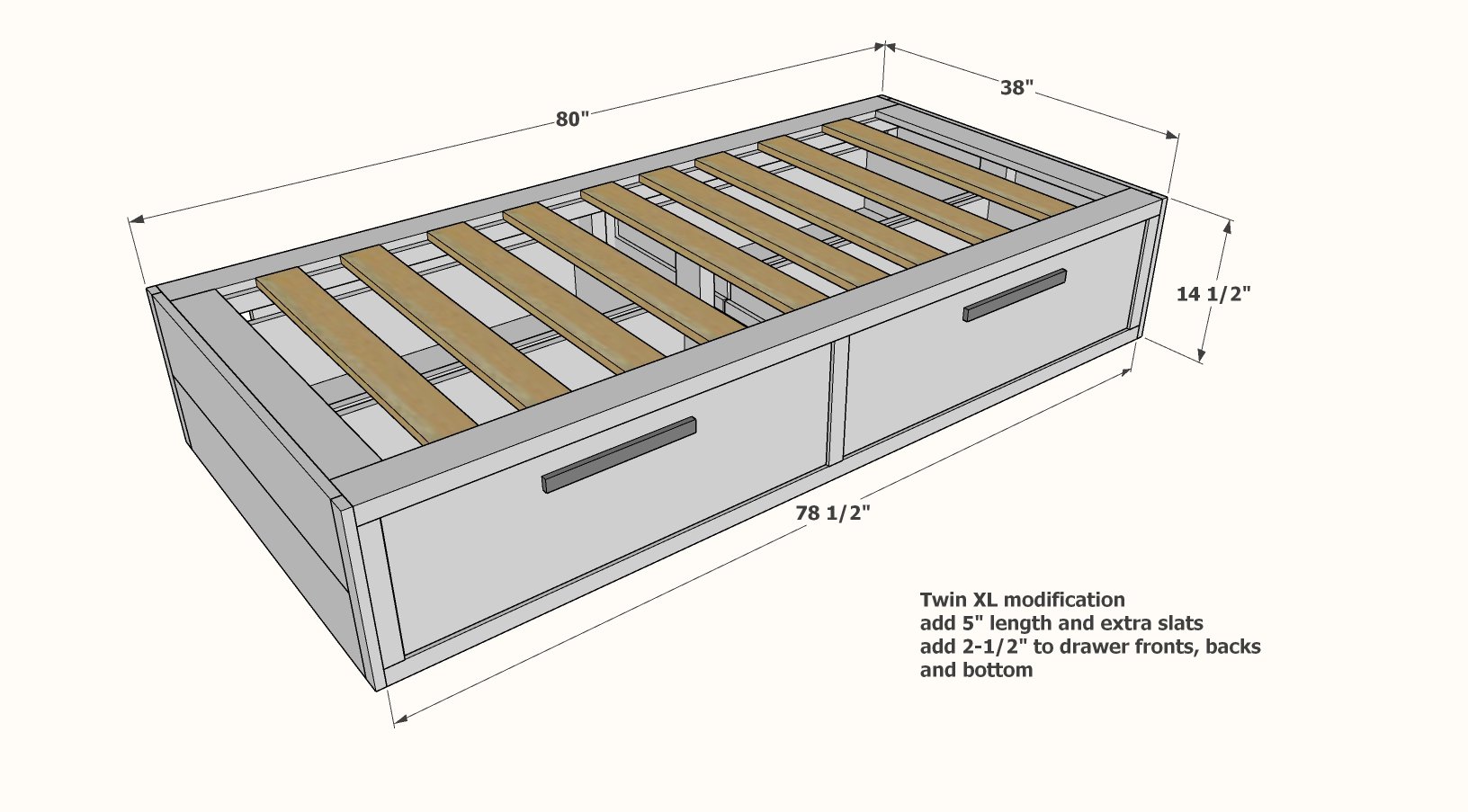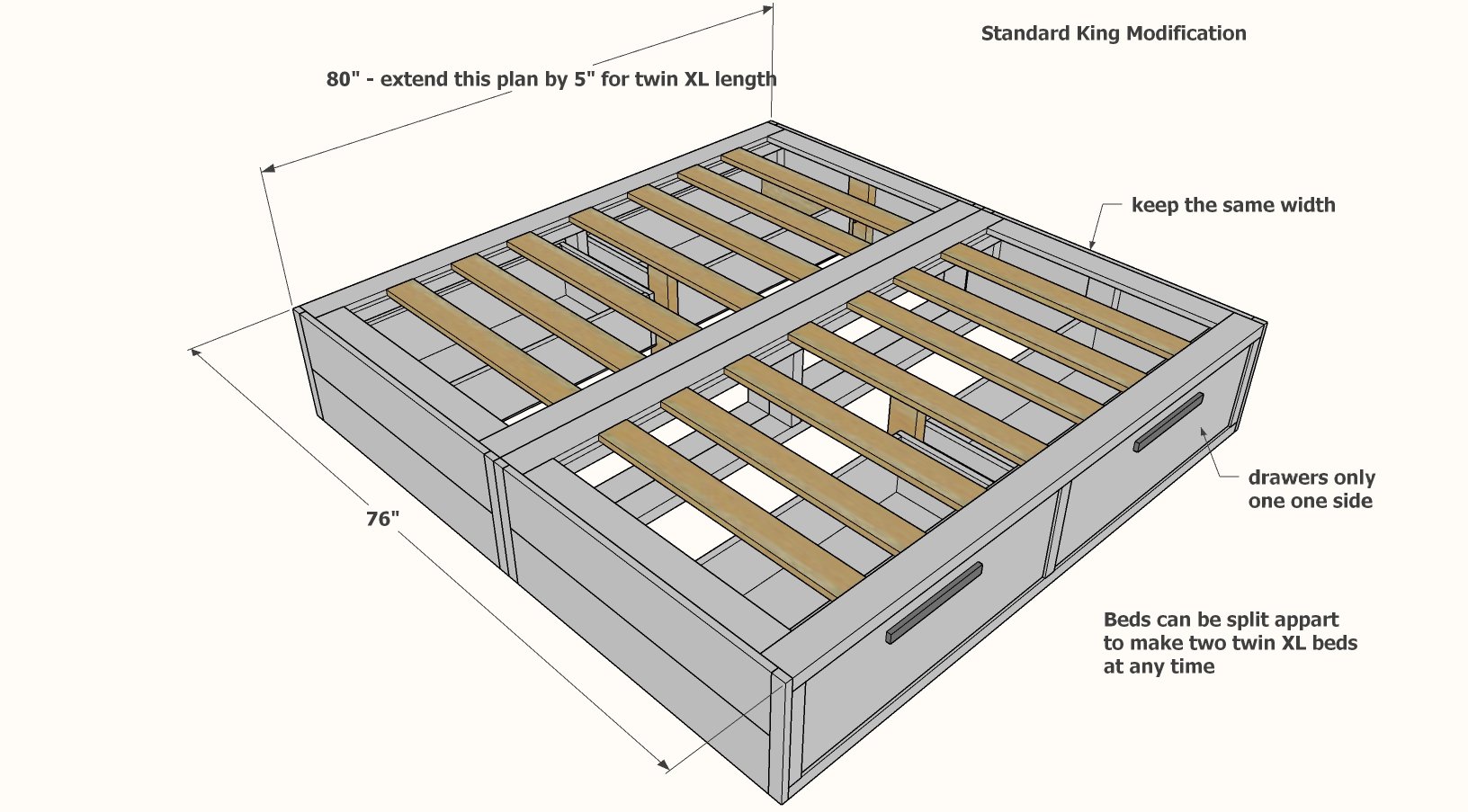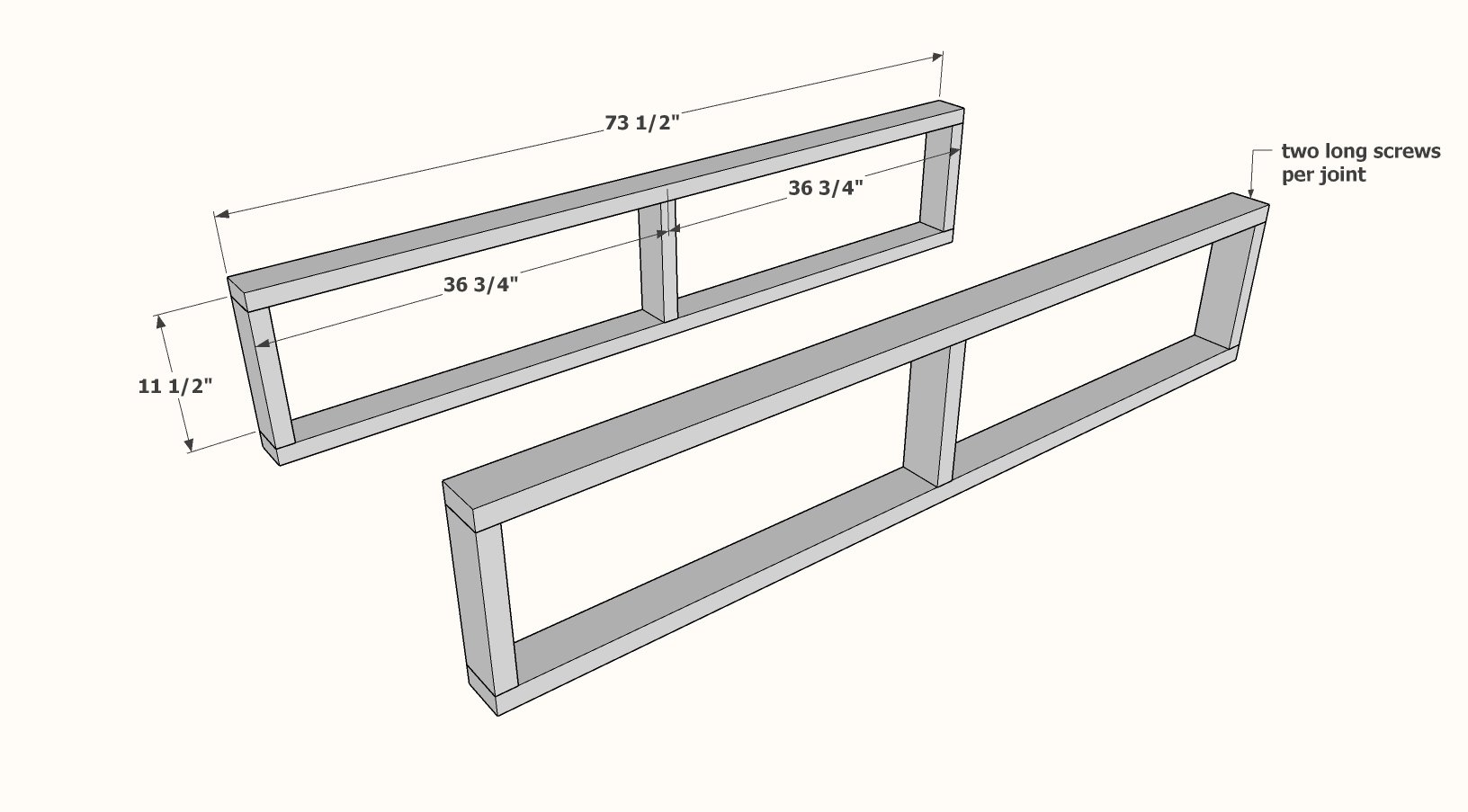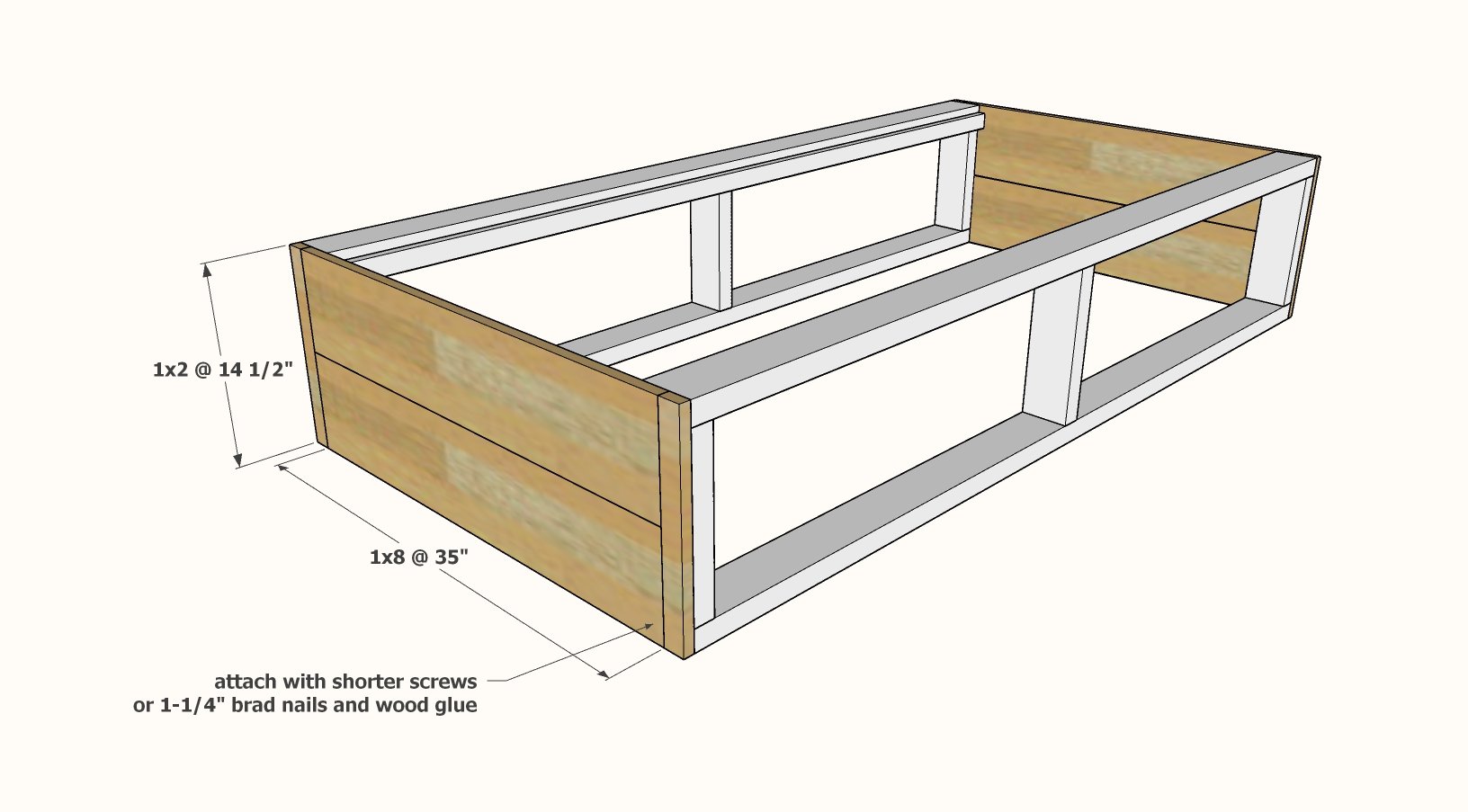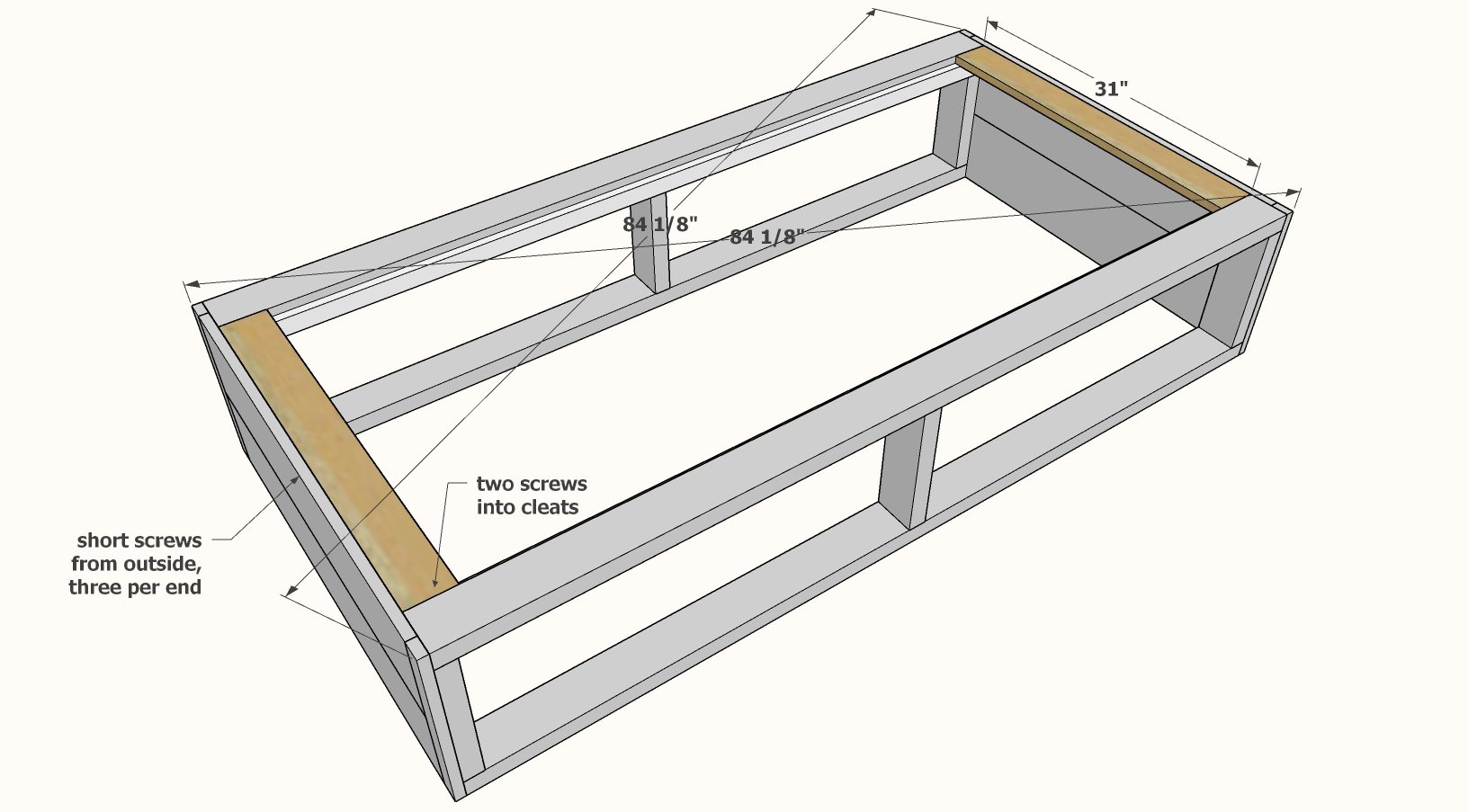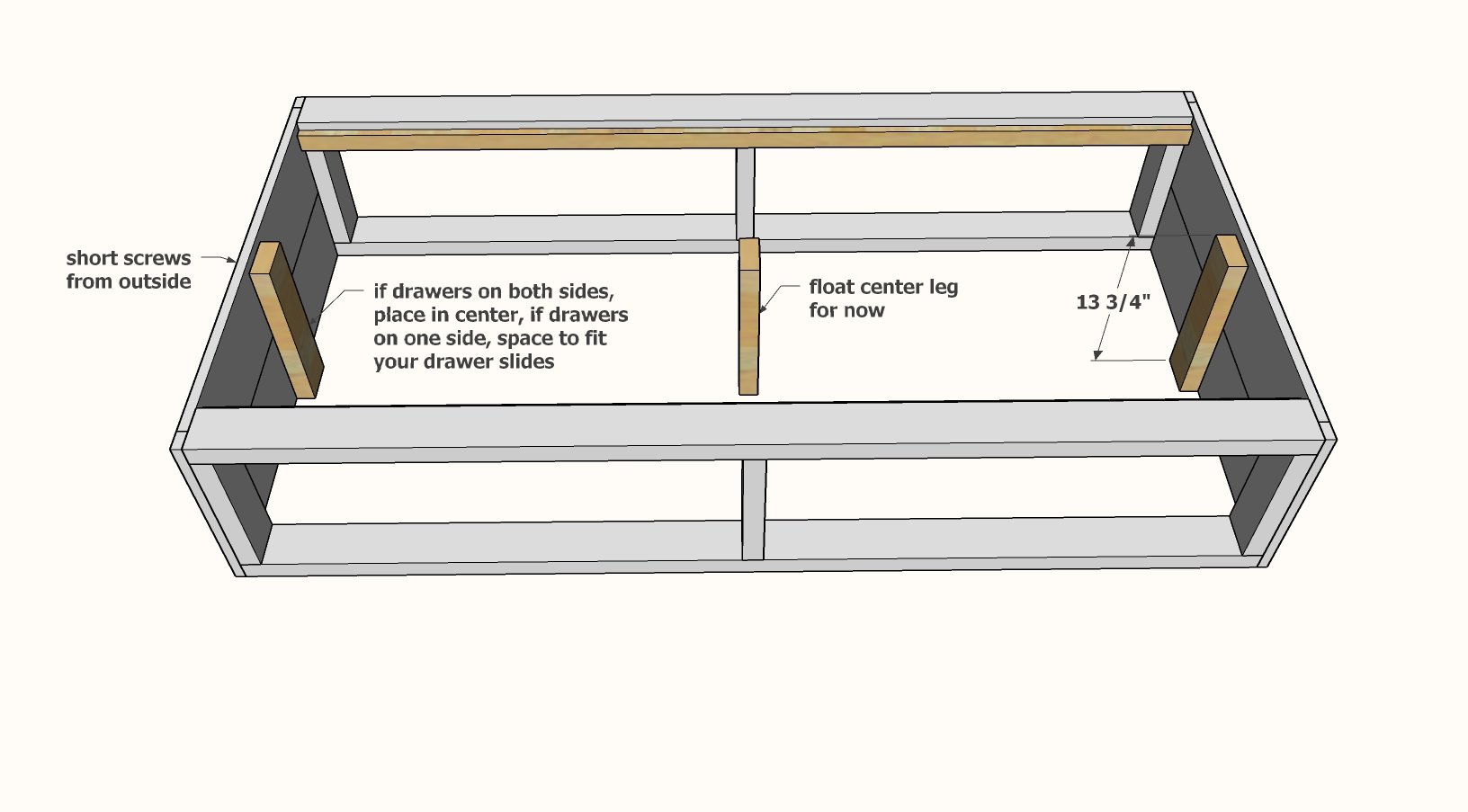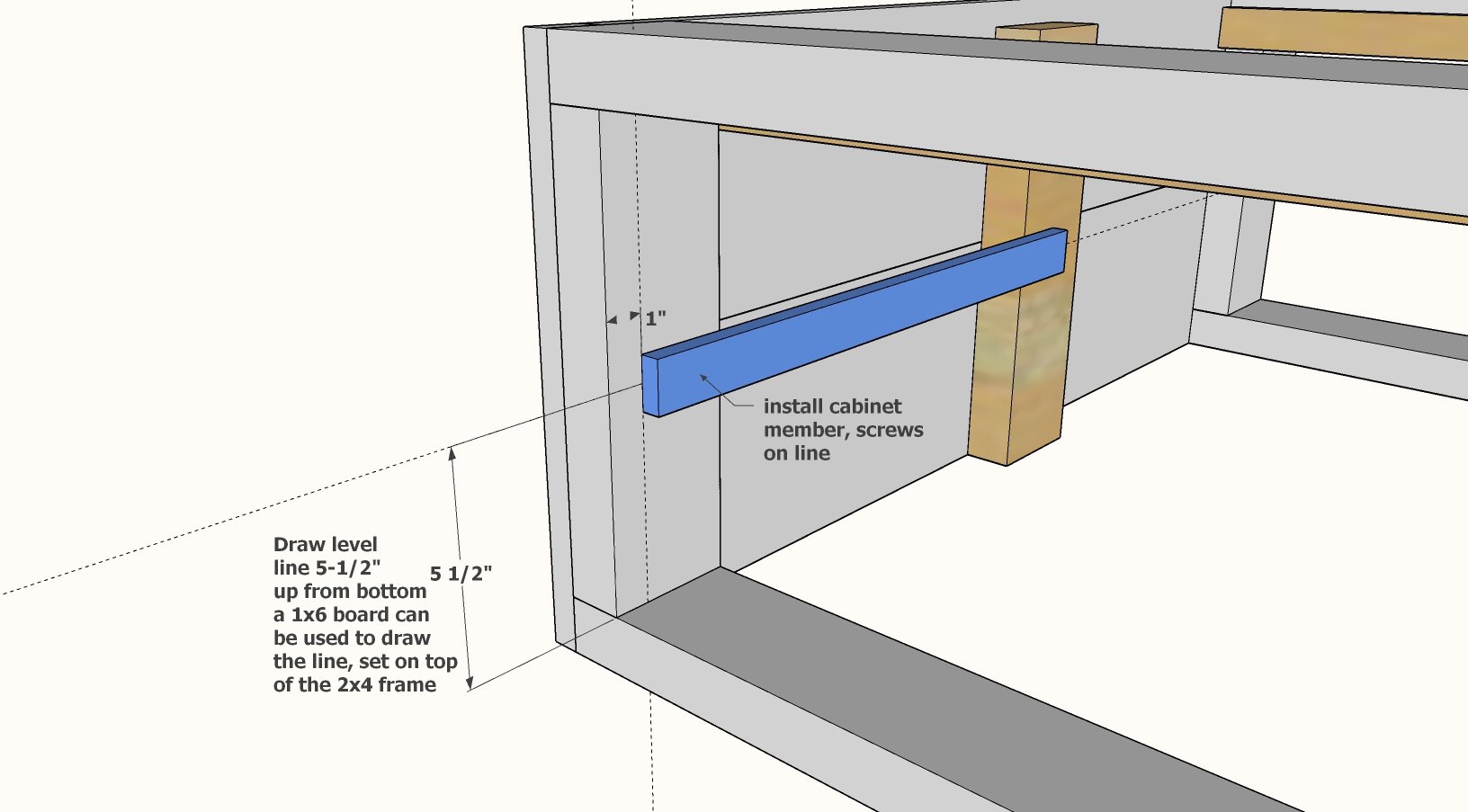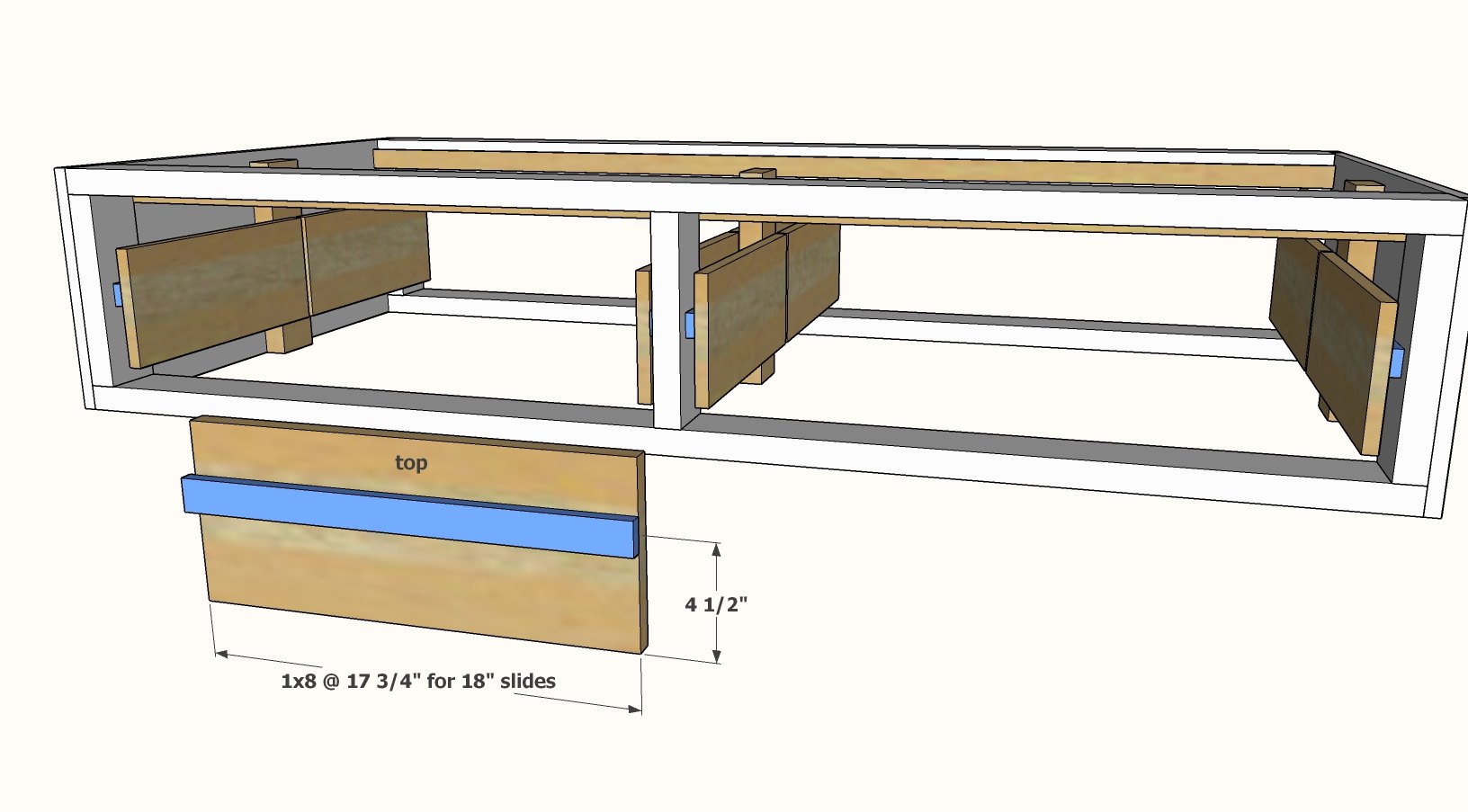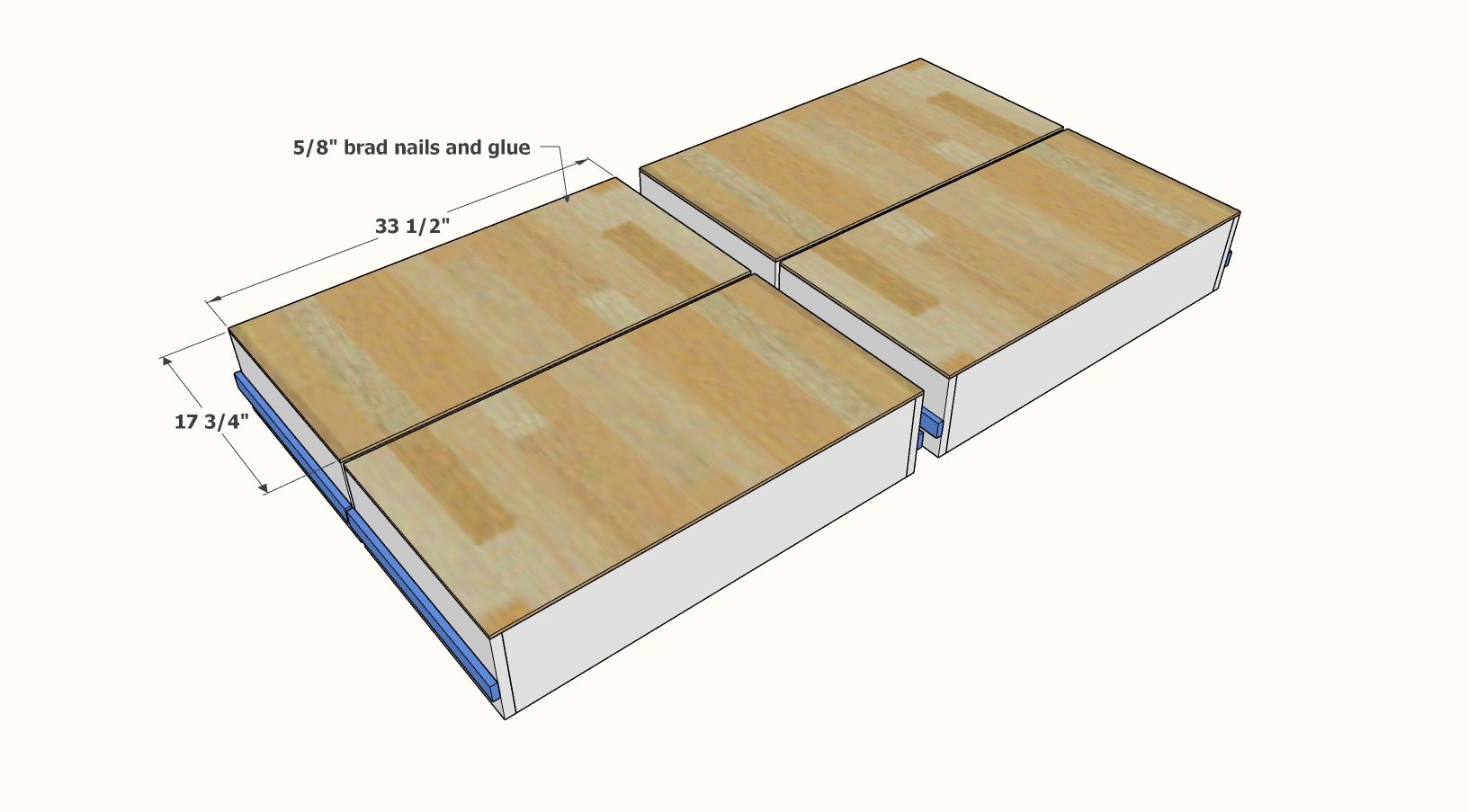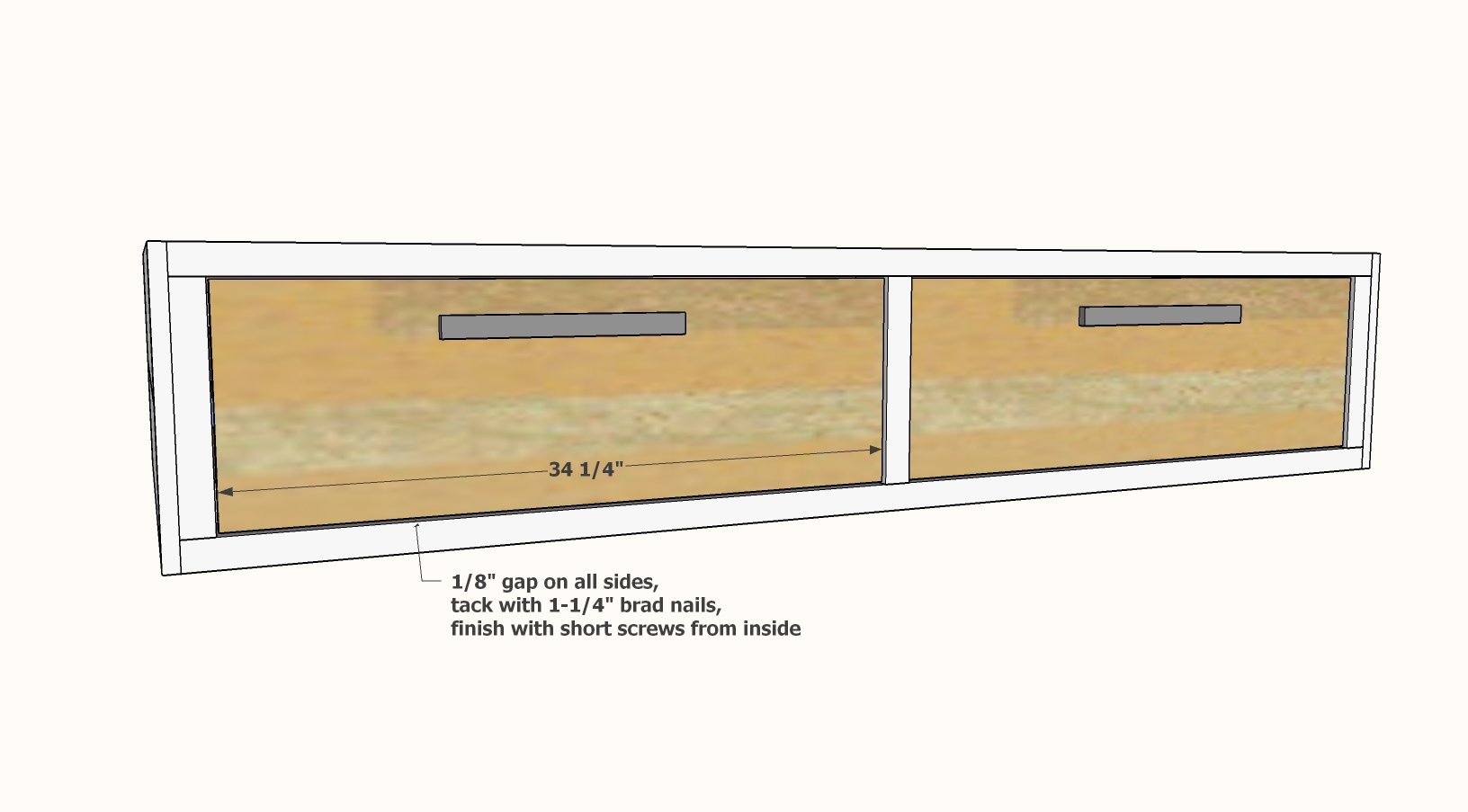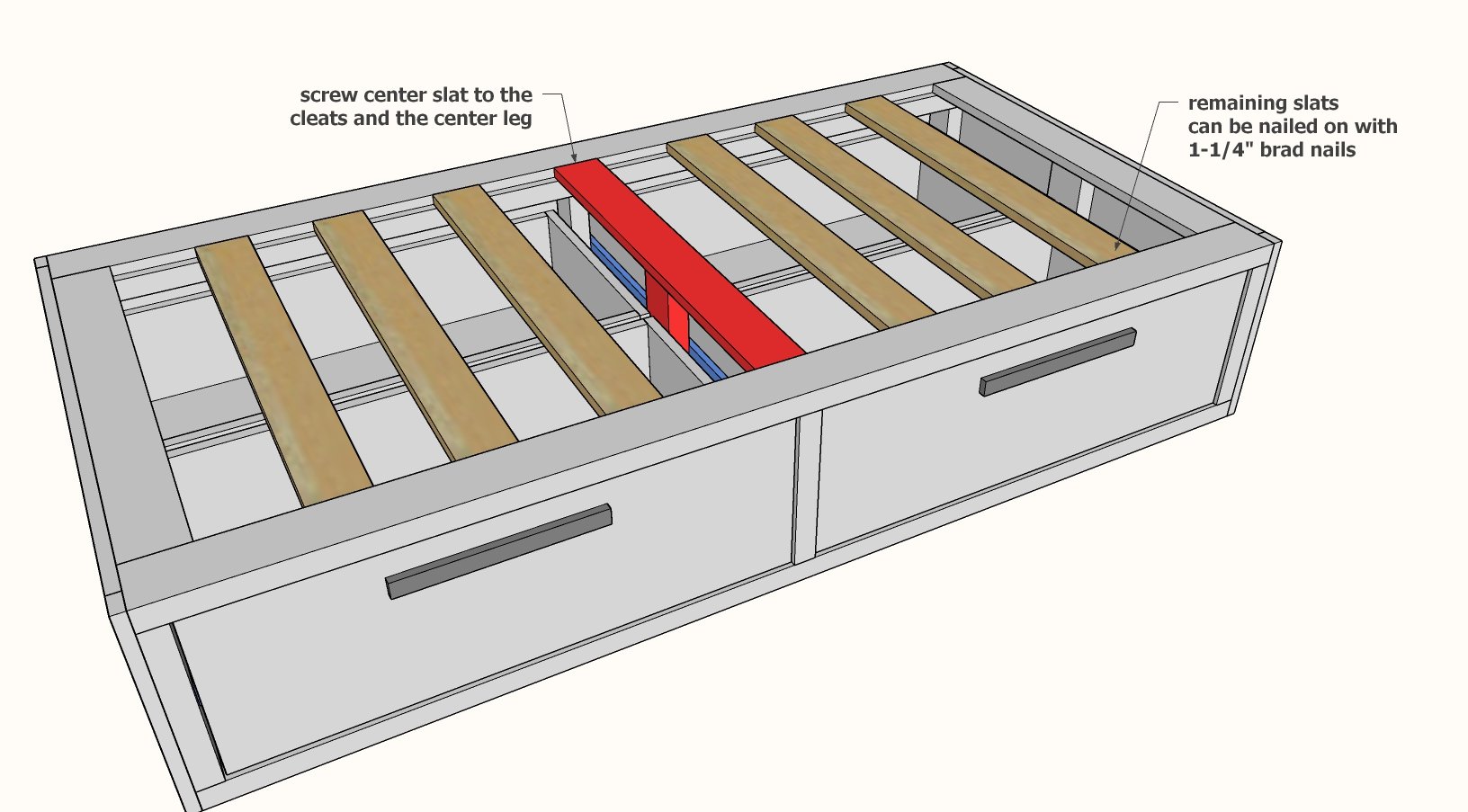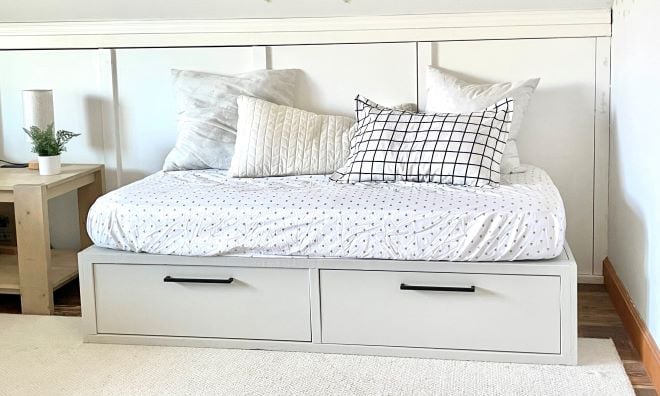
Easy to build bed with drawers using basic tools and materials. Free step by step plans with diagrams, video tutorial, shopping and cut list from Ana-White.com
Pin For Later!

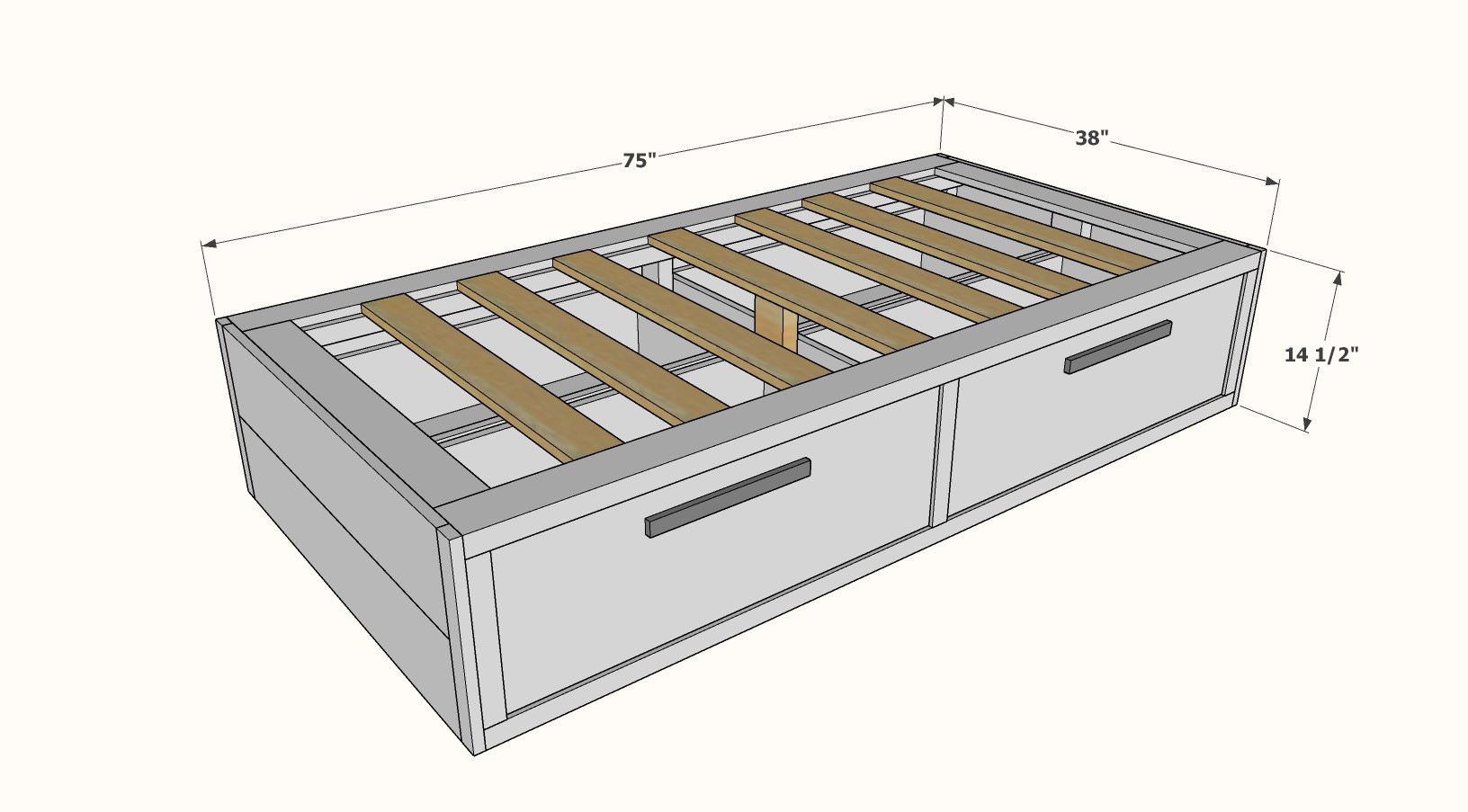
Preparation
- 5 - 2x4 @ 8 feet long
- 3 - 1x4 @ 8 feet long
- 3 - 1x2 @ 8 feet long
- 5 - 1x8 @ 6 feet long
- 1 - 1x12 @ 6 feet long
- 2 - 18" full extension drawer slides
- 1/2 sheet of 1/4" thick plywood or underlayment for drawer bottoms
- 2 handles or knobs
- (24) 2-1/2" long self tapping star bit screws (can also be 2-3/4" length
- (72) 1-1/2" long self tapping star bit screws (can also be 1-5/8" or 1-3/4" length)
- 5/8" brad nails
- 1-1/4" brad nails
- wood glue
For drawers on both sides (4 total), you'll also need
- 2 more 18" full extension drawer slides
- 9 more feet of 1x8 boards
- 1 more 1x12 @ 6 feet long
- 1/2 sheet of 1/4" thick plywood or underlayment
- 2 more handles or knobs
Bed Frame
- 4 - 2x4 @ 73-1/2" - 2x4 frame top and bottom
- 6 - 2x4 @ 11-1/2" - 2x4 frame verticals
- 2 - 1x2 @ 73-1/2" - cleats
- 9 - 1x4 @ 31" - slats
- 3 - 2x4 @ 13-3/4" - center leg and drawer slide furring
Footboard/Headboard
- 4 - 1x2 @ 14-1/2"
- 4 - 1x8 @ 35"
Drawers (for two drawers daybed style, double the cut list for four drawers, drawers on both sides of bed)
- 4 - 1x8 @ 17-3/4" - drawer sides
- 4 - 1x8 @ about 32" - drawer front and back, measure and cut to fit
- 2 - 1/4" plywood @ 17-3/4" x 33-1/2" - drawer bottoms
- 2 - 1x12 @ 34-1/2" - drawer faces
Precise cuts are necessary for drawers to slide smoothly. Use a compound miter saw or chop saw.
Instructions
Step 1
Step 2
Step 3
Attach the 1x2s to the outside edges of the frames with 1-1/4" brad nails and glue.
Then add the 1x8 pieces, I recommend screws and glue.
You can use other materials for the headboard/footboards if you are wanting to burn up scraps.
The headboard can also not be completely filled in if against the wall and you are wanting to buy less 1x8s - you could use a 1x3 or 1x4 at the top and bottom as done in the video.
Step 4
Step 5
Step 6
Draw a line horizontal as shown, on the vertical 2x4s.
Draw a line inset 1" from the front of the 2x4s.
Separate out the drawer slides into the cabinet member and the drawer member.
Attach the drawer slide cabinet member to the 2x4s, with the screws centered on the line.
TIP: I like to use the holes with the vertical adjustment so I have the ability to adjust the slide up or down even after starting my screws.
Step 7
Mark the wood drawer sides 4-1/2" up from the bottom and draw a line parallel to the bottom edge.
Attach the drawer slides with the screws on this line.
The front edge of the drawer member should be flush to the front edge of the wood drawer side.
Remember to attach the drawer slide on the other side in mirror.
Install all drawer sides into the drawer slides.
Step 8
Step 9
Step 10
Vacuum the sawdust and wipe clean with a just damp cloth.
Prime and paint, or stain and finish with a clear coat.



